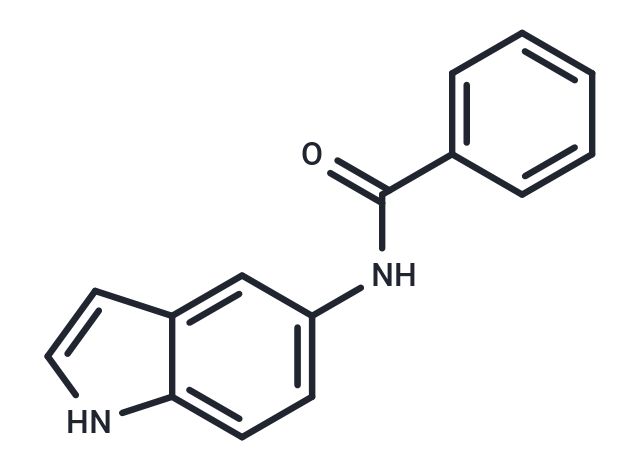Shopping Cart
Remove All Your shopping cart is currently empty
Your shopping cart is currently empty
OAC2 is an Oct4 activator which activates expression through the Oct4 gene promoter; enhances reprogramming efficiency by increasing the rate of production of induced pluripotent stem cells (iPSCs) from embryonic fibroblasts; an analog of OAC1.

| Pack Size | Price | USA Warehouse | Global Warehouse | Quantity |
|---|---|---|---|---|
| 5 mg | $39 | In Stock | In Stock | |
| 10 mg | $63 | In Stock | In Stock | |
| 25 mg | $116 | In Stock | In Stock | |
| 50 mg | $169 | In Stock | In Stock | |
| 100 mg | $247 | In Stock | In Stock | |
| 200 mg | $367 | In Stock | - | |
| 1 mL x 10 mM (in DMSO) | $44 | In Stock | In Stock |
| Description | OAC2 is an Oct4 activator which activates expression through the Oct4 gene promoter; enhances reprogramming efficiency by increasing the rate of production of induced pluripotent stem cells (iPSCs) from embryonic fibroblasts; an analog of OAC1. |
| In vitro | Octamer-binding transcription factor 4 (Oct4) is crucial for initiating and maintaining cellular pluripotency, especially during early differentiation stages, and cannot be substituted by any family members for this function[1]. Essential for embryonic stem cell (ESC) pluripotency and reprogramming, Oct4, along with Sox2, Klf4, and c-Myc, benefits from the structural analog OAC2, which activates Oct4 and Nanog reporters like OAC1. OAC1 and its analogs OAC2 and OAC3 significantly enhance reprogramming efficiency by up to 2.75% and accelerate iPSC colony formation by 3 to 4 days[2]. |
| Cell Research | The Oct4-luc or Nanog-luc cells are treated with compound OAC1 or its structural analogs OAC2, OAC3 at 1 μM concentration or at indicated concentrations. Other compounds used include 2 μM BIO, 2 μM BIX, 2 μM 5'-azacytidine, 25 μg/mL Vitamin C, 10 nM Am580, 5 μM tranylcypromine, and 0.5 mM valporic acid. Luciferase reporter assays are performed 24 h after compound treatment or at indicated time points. For Topflash reporter assays, 0.2 μg β-catenin–responsive Topflash reporter gene plasmid is introduced into CV1 cells using trasfection. Compounds are added 6 h after transfection. Luciferase activity is measured 48 h after compound treatment using the Glo Luciferase Assay System[2]. |
| Molecular Weight | 236.27 |
| Formula | C15H12N2O |
| Cas No. | 6019-39-2 |
| Smiles | O=C(Nc1ccc2[nH]ccc2c1)c1ccccc1 |
| Relative Density. | 1.307 g/cm3 (Predicted) |
| Storage | Powder: -20°C for 3 years | In solvent: -80°C for 1 year | Shipping with blue ice/Shipping at ambient temperature. | ||||||||||||||||||||||||||||||
| Solubility Information | DMSO: 23.6 mg/mL (99.89 mM), Sonication is recommended. | ||||||||||||||||||||||||||||||
| In Vivo Formulation | 10% DMSO+40% PEG300+5% Tween 80+45% Saline: 2 mg/mL (8.46 mM), Sonication is recommended. Please add the solvents sequentially, clarifying the solution as much as possible before adding the next one. Dissolve by heating and/or sonication if necessary. Working solution is recommended to be prepared and used immediately. The formulation provided above is for reference purposes only. In vivo formulations may vary and should be modified based on specific experimental conditions. | ||||||||||||||||||||||||||||||
Solution Preparation Table | |||||||||||||||||||||||||||||||
DMSO
| |||||||||||||||||||||||||||||||
| Size | Quantity | Unit Price | Amount | Operation |
|---|

Copyright © 2015-2025 TargetMol Chemicals Inc. All Rights Reserved.